The Dutch door is one that is split in the middle, though unlike a French door, the door is split with a horizontal cut rather than vertical. The top and bottom halves can be opened and closed independent of one another.

The doors can be customized with molding and paint to blend with your home in a seamless way or deliver an unforgettable statement.
Dutch doors go by many names and are also known as stable doors, double-hung doors, and half doors. They originated in Europe in the 17th century as a way of keeping barn animals outside while allowing fresh air inside.
All Dutch doors require one piece of special hardware; the latch is the piece that connects the bottom portion to the top portion. The Dutch door latch is bolted when both the top and bottom half doors are closed but can be left open if either section is open.
There are doors that are split with an even top and a bottom, and a 3/4 Dutch door that has a larger top or bottom portion.
Pros:
These doors are high on charm. They have such a unique look that they create instant appeal for your house.They are practical in that they can replace a baby gate for animals or children that you need to corral. Just close the lower door and leave the upper portion open so that you can still see and hear into the next room or yard area.They allow fresh air into the home without having to open the whole door.You can open the top portion when receiving deliveries allowing many to feel less vulnerable than opening the whole door to a stranger.
Cons:
It can be difficult to put a screen on a Dutch door, so insects and bugs are bound to come into your home when you leave this door open. While it isn’t practical or attractive to have a screen over your Dutch door, some add a sliding retractable screen door to the door molding outside the door.Dutch doors are difficult for children to use, and because they can be tricky to close; fingers may be pinched in the process.Dutch doors are more custom than standard doors, so they are a more expensive option than a regular door.Because there are so many moving parts on a Dutch door, they can be hard to install. Also, if they are not installed well, Dutch doors are less weatherproof.
Here are some wonderful ideas for you to consider as you think about adding one of these doors in your home.
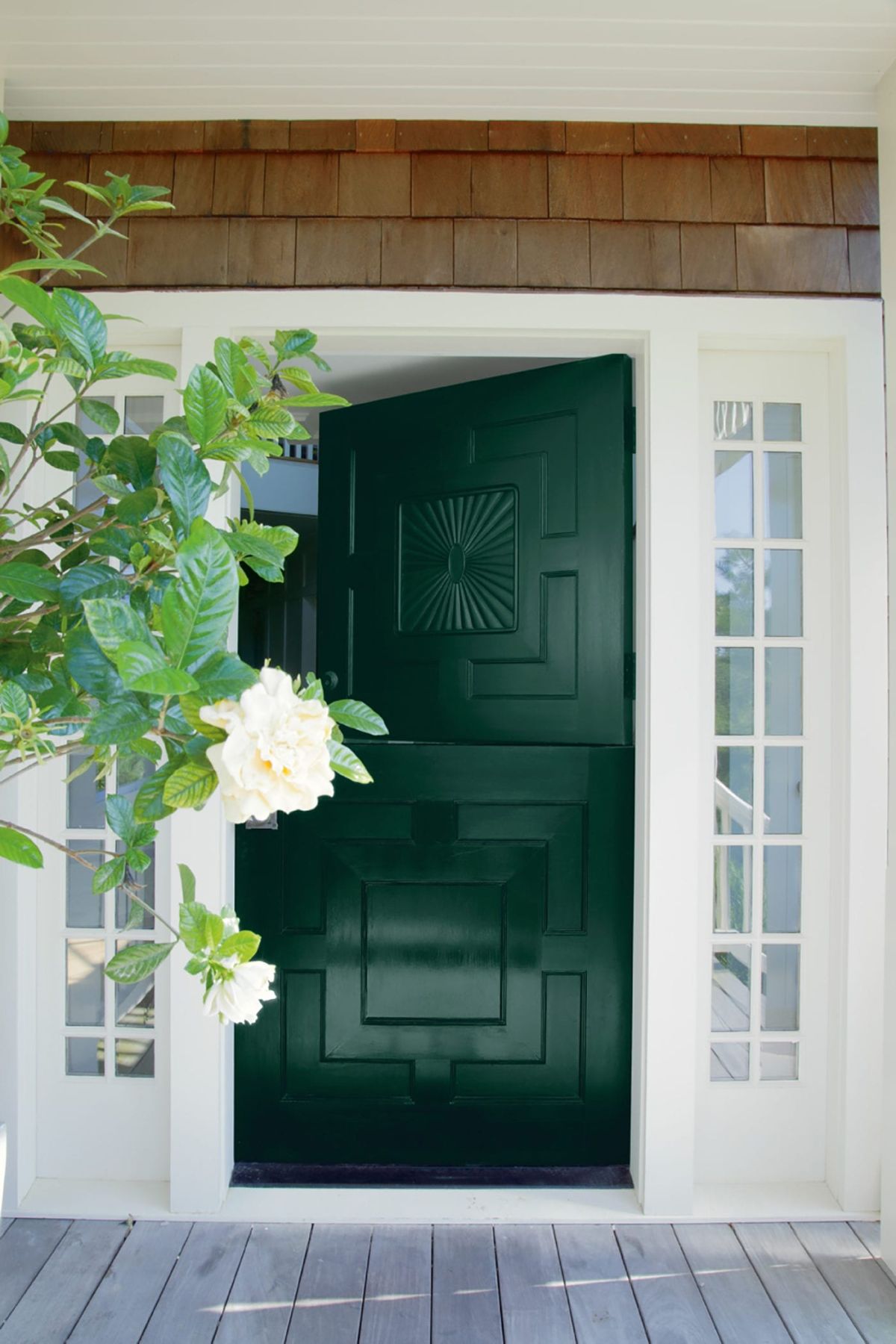 Benjamin Moore
Benjamin Moore
Double Dutch exterior doors are a statement all in themselves. However, painting it a stunning color will up the ante for all your neighbors. This solid wood Dutch door is elegant in dark green paint and finished with intricate molding.
The side lights allow plenty of natural light to filter through. When you are ready for more light and fresh air, just open the top part of the door. If you are interested in painting your door something similar, try Sherwin Williams Hunt Club (SW 6468) or Green Bay (2045-10) from Benjamin Moore.
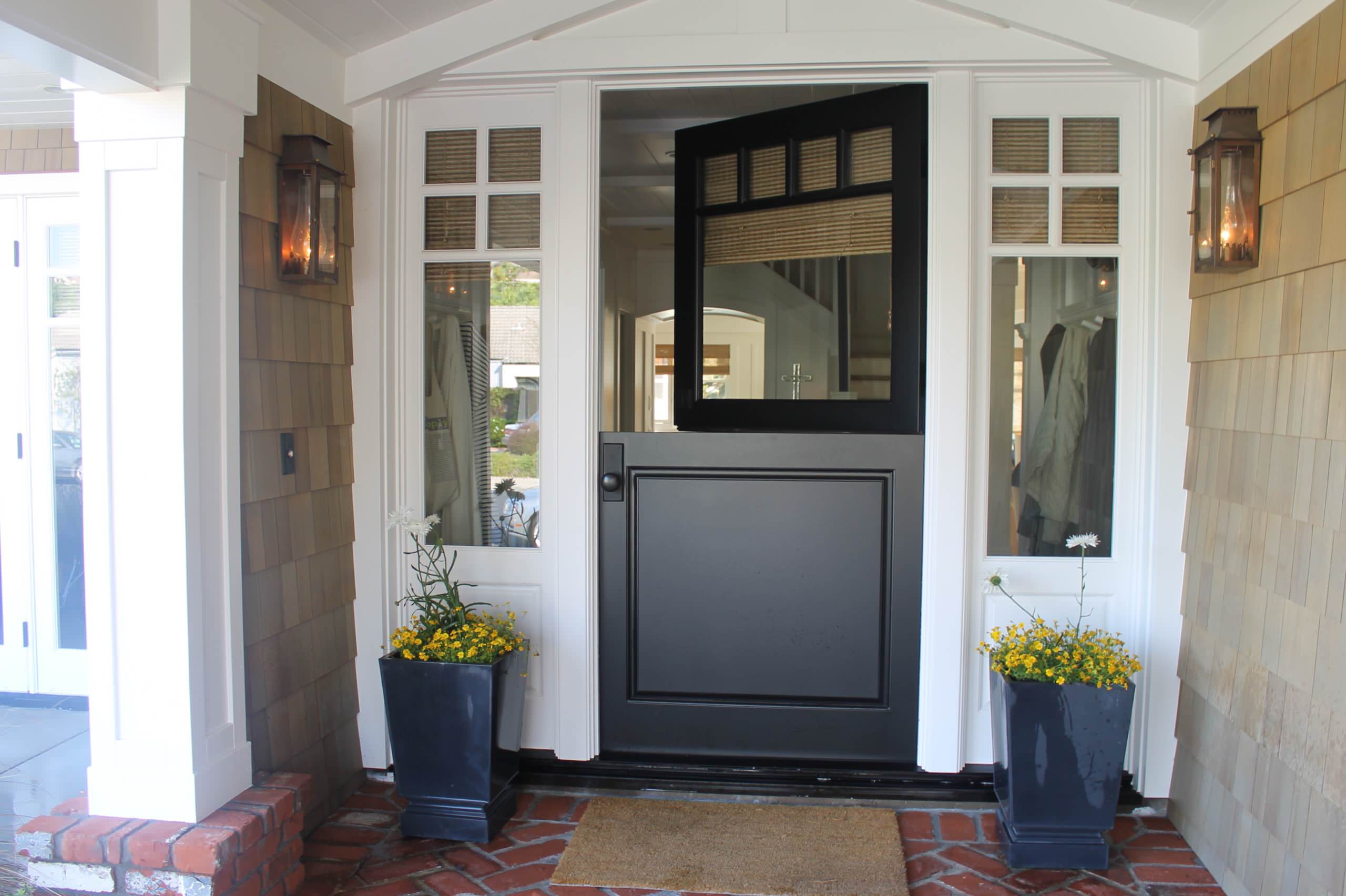
Let in more natural light with this craftsman-style Dutch door design. This exterior door has a five-light glass-paneled top that complements the same style sidelights.
This creates a pleasing symmetry that works well on a craftsman’s bungalow. The homeowners have painted the door a black color to give the door a look of simple refinement.
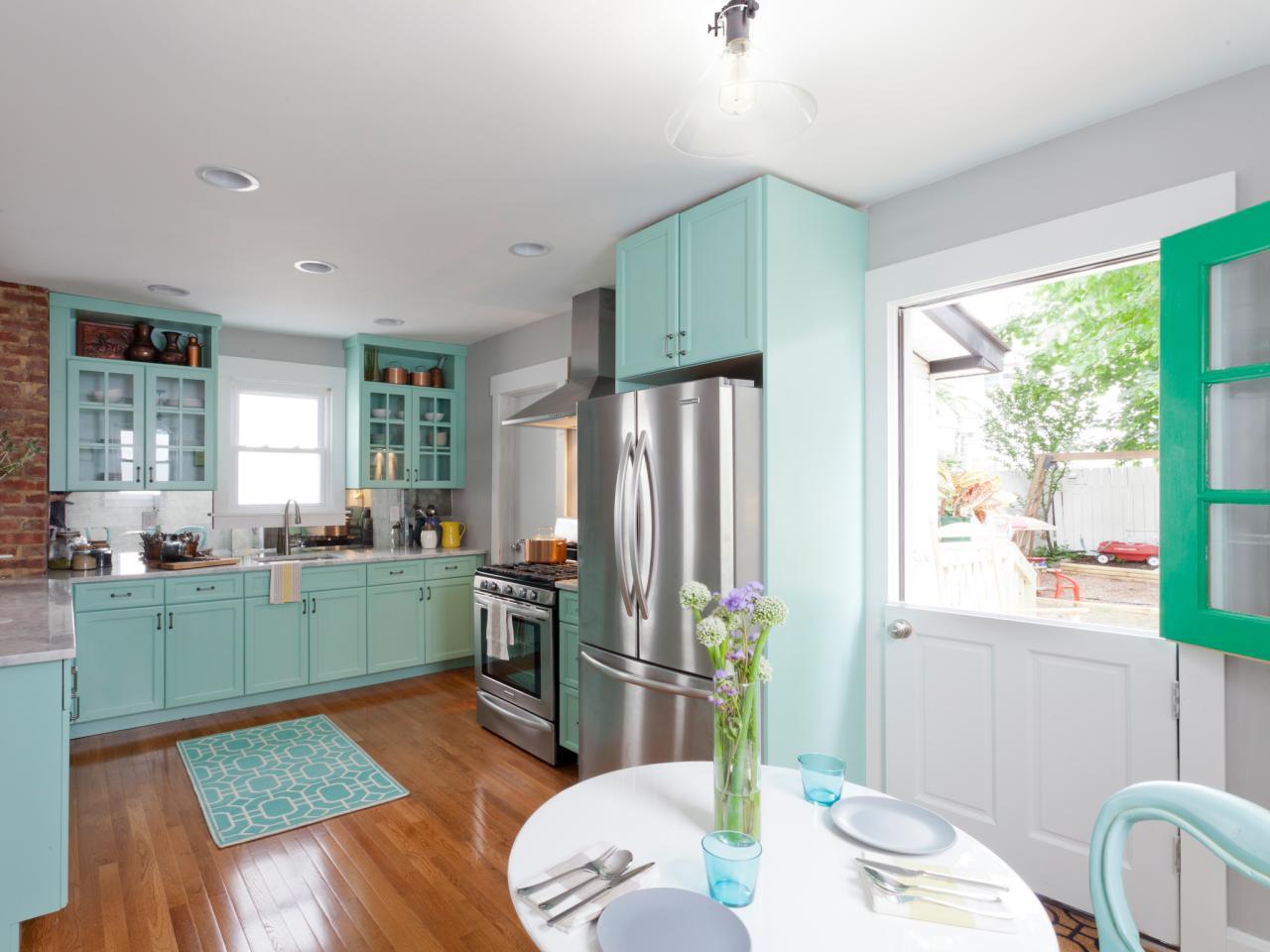
If you can’t decide on one color for your door, why not choose two?
Double Dutch doors allow one portion to remain open, giving you the chance to show both sides of the door at the same time. These owners have painted the Dutch door exterior with a bright green color.
They have kept the Dutch door interior more neutral to blend with the aqua blue kitchen. If you like the exterior color of this door, try Teal Blast (2039-40) from Benjamin Moore.
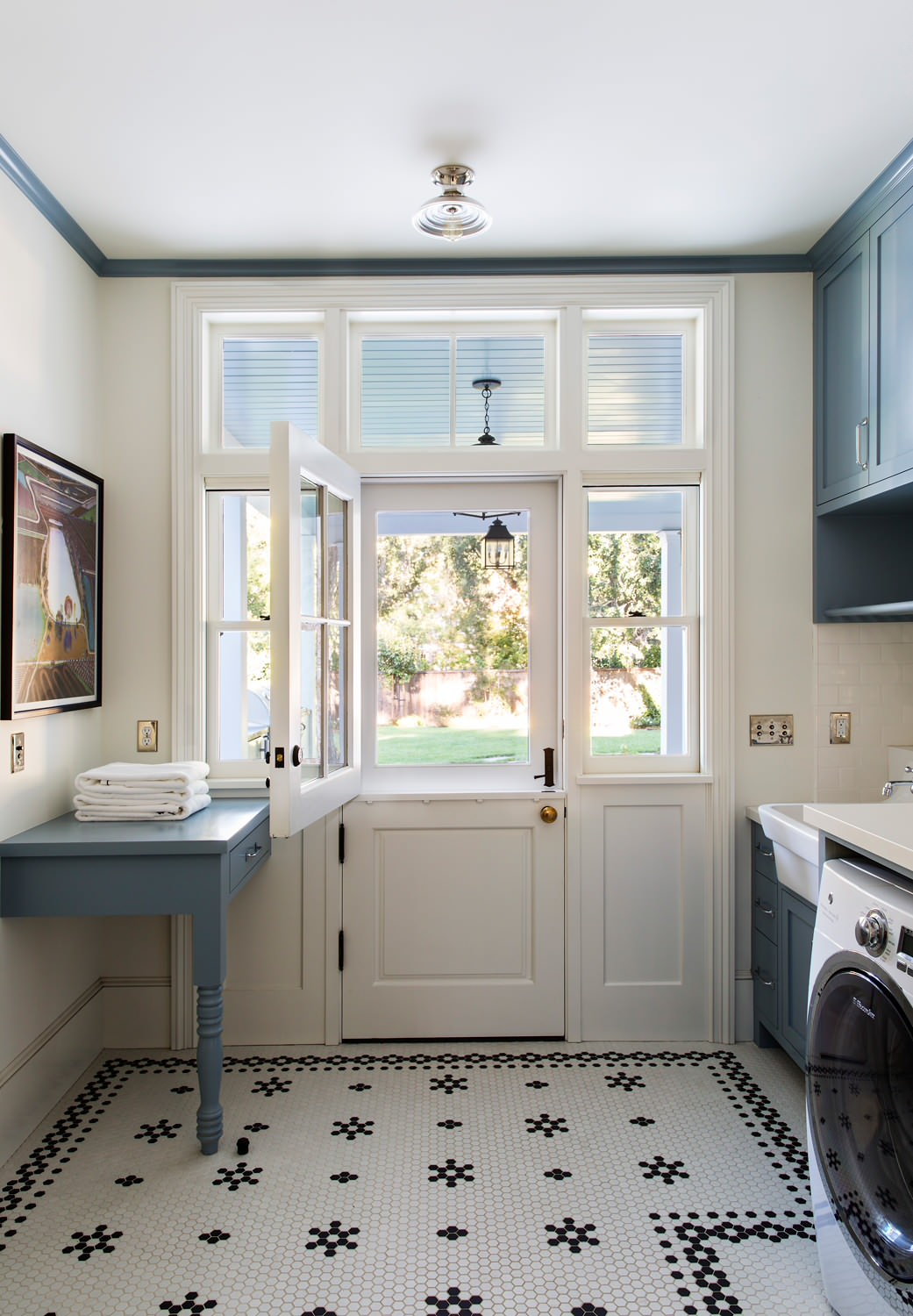 Tim Barber Architects
Tim Barber Architects
These homeowners have extended the look of the single glass-paneled front Dutch door. They added large transoms above the door and the sidelights to let in as much light as possible. The look is simple and stately.
The owners have painted the door white along with the surrounding side panels and molding.
Also, the deep blue crown molding around the top and the mosaic tile floor adds further definition to the entry.
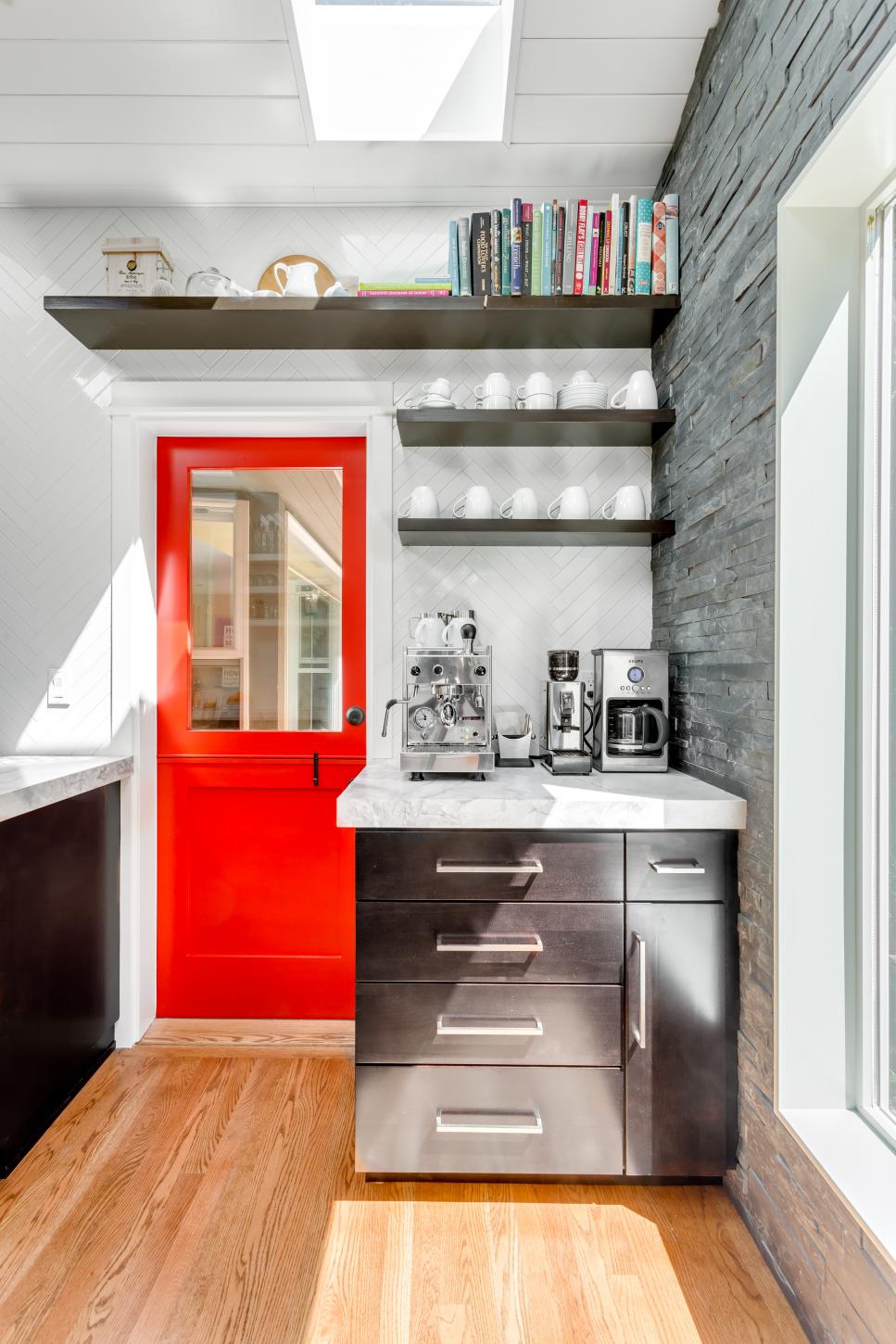
An interior Dutch door painted in red gives this kitchen a bright splash of color into the neutral space. Further, these doors are handy inside the home for keeping kids and/or pets safe rather than adding a more intrusive element like a baby gate.
Dutch doors contain the mess of pantries, mudrooms, or laundry rooms without closing off the whole room from sight. This door can grow with the needs of the family.
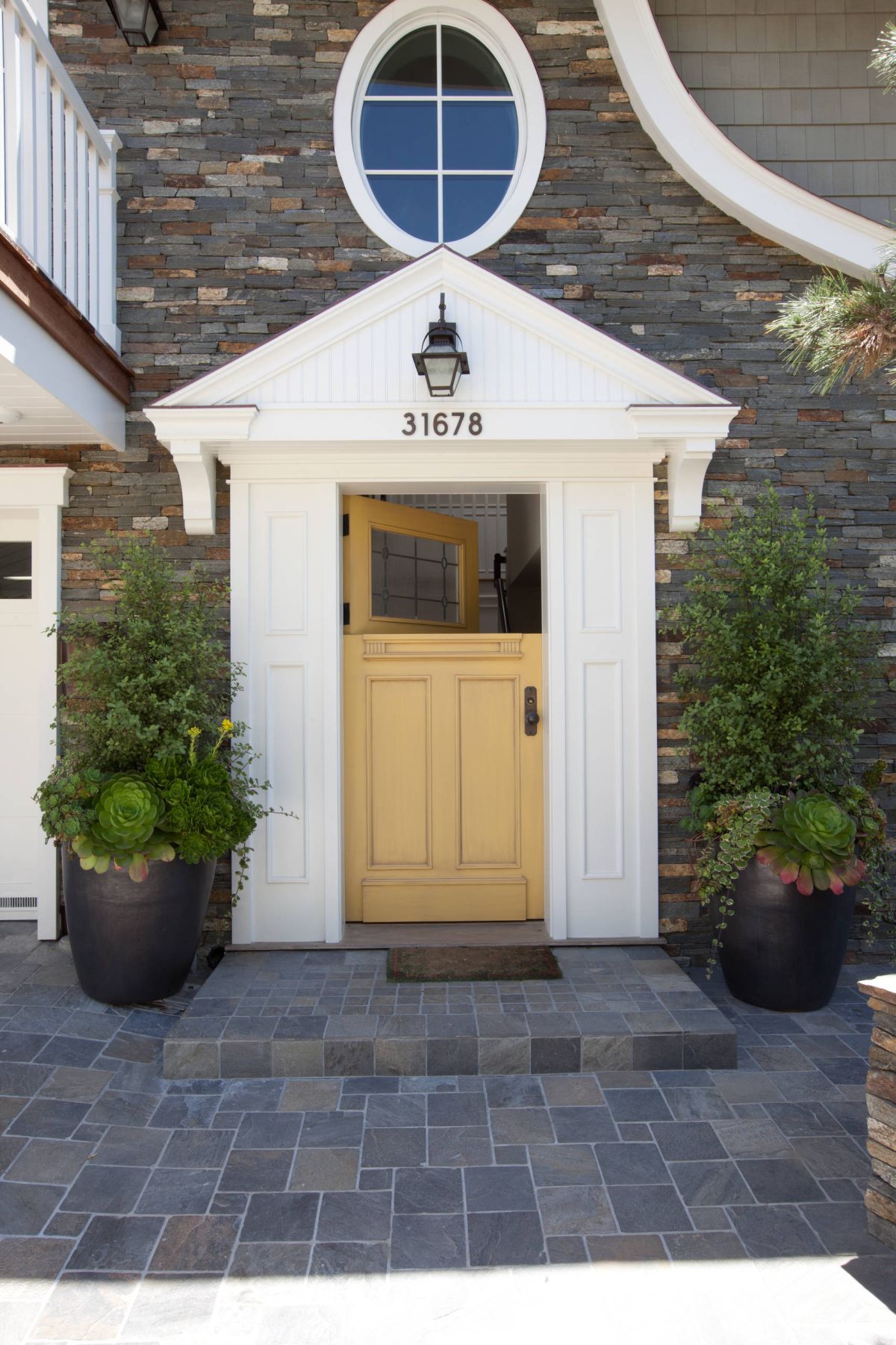 LCR
LCR
This front door is an example of a 3/4 Dutch door. The light yellow has a cheerful but elegant look, perfect for this entry with dark tones.
It complements the charcoal tones in the brick and the slate tile foundation. The frame around the door creates a formal look for the entry.
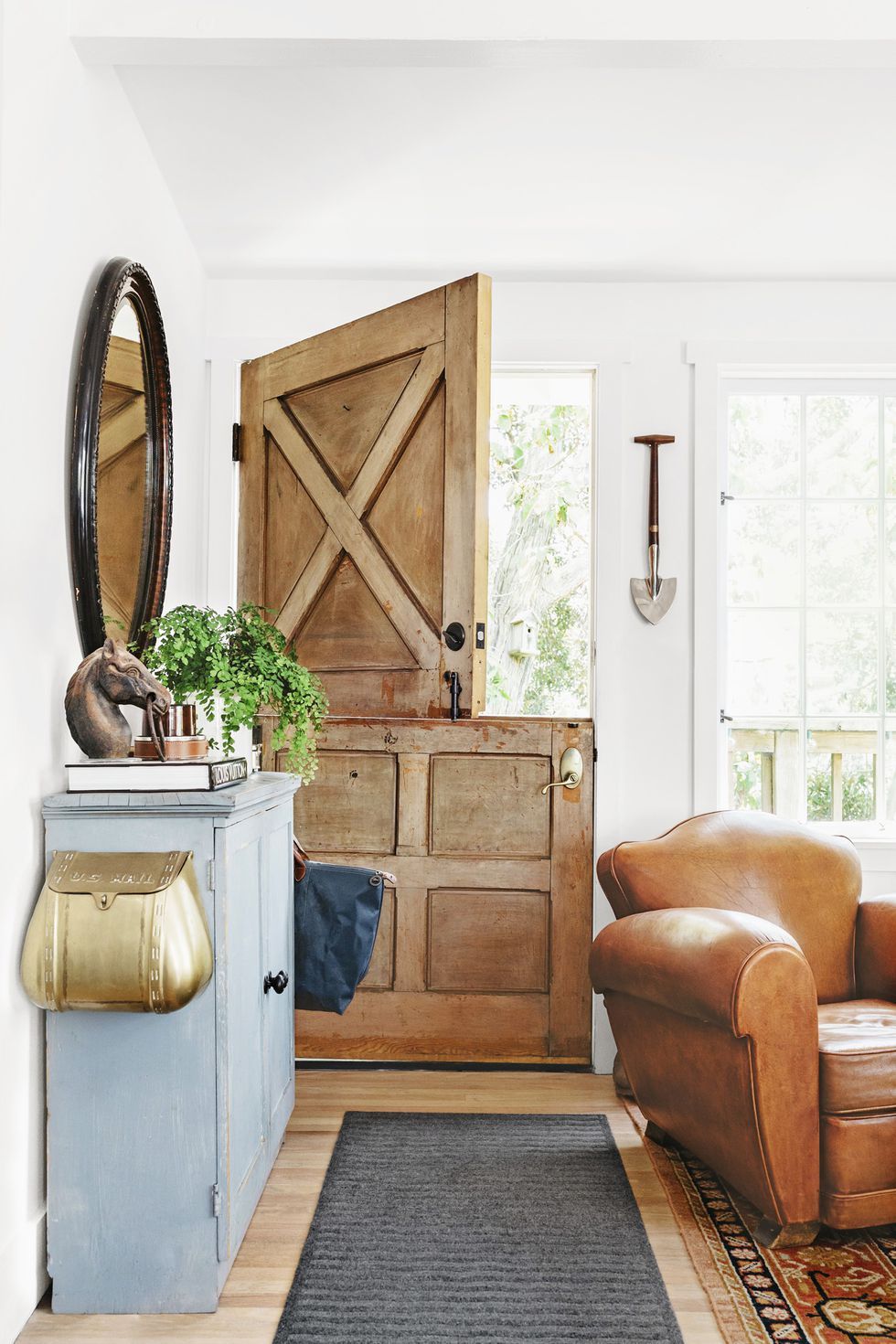 City Farmhouse
City Farmhouse
This front door design is the perfect element to add the rustic charm of barn doors to your home style.
The barn design and look complement the earthy and textured tones of the living room. This look is similar to sliding barn doors that many people use as interior doors now.
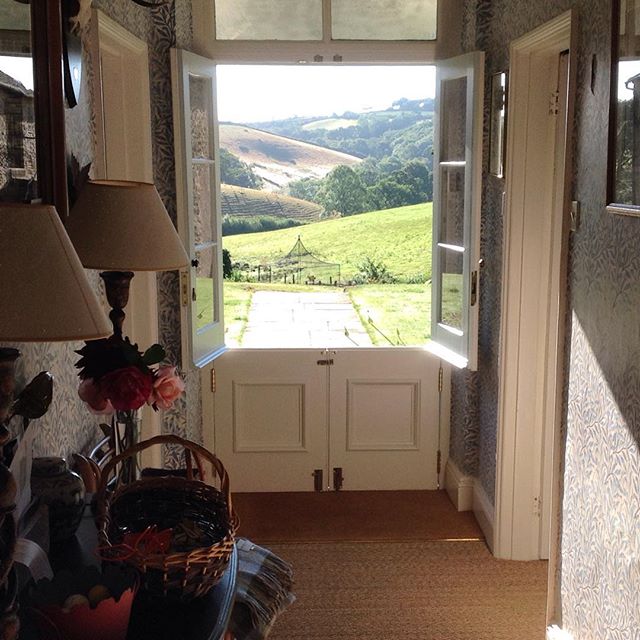 My Favorite and Best
My Favorite and Best
Take in more of the outside world with a double Dutch door. This double hung door has four panels that open independent of one another. This home overlooks a lovely view, and the homeowners have welcomed this view into their home by throwing wide the top door panels.
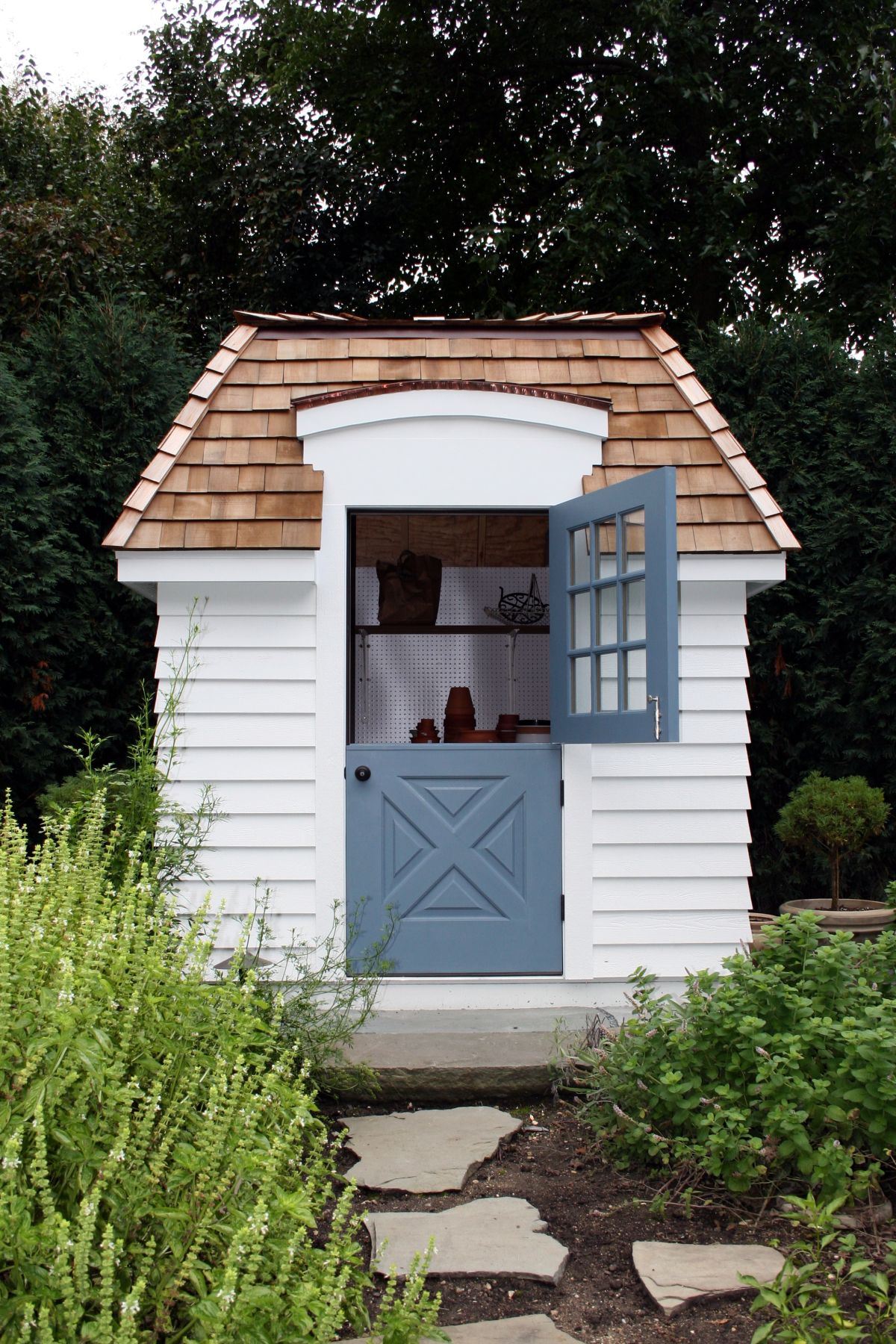 O’Connor Brehm
O’Connor Brehm
Painted Dutch doors are the perfect addition to any backyard shed. It increases the charm of any common building and if you paint the shed a light color, paint the door a contrasting color for added interest. Also, the window at the top of the door allows light to filter through, and when it is open, you can air out the room without allowing random wildlife to wander in unhindered.
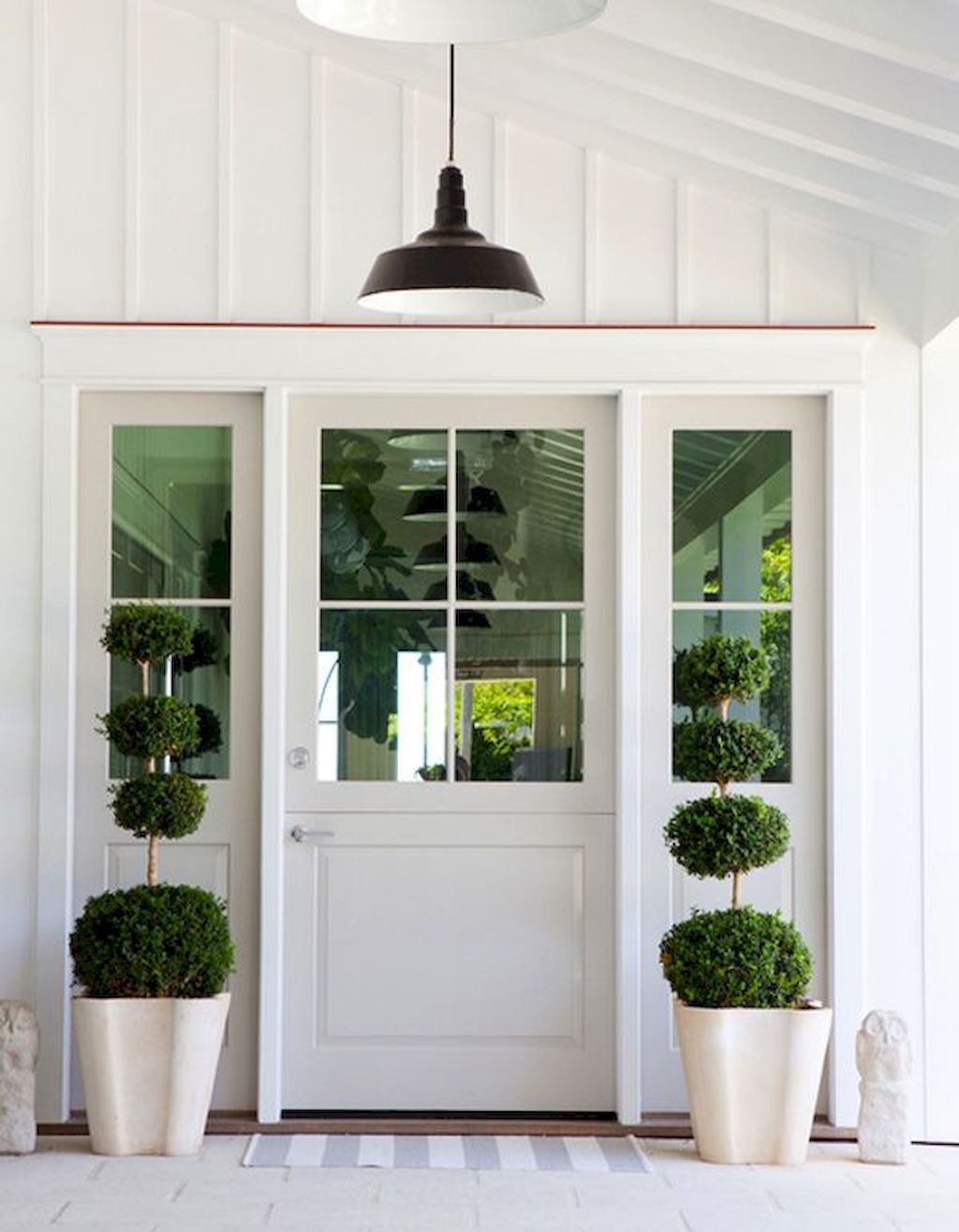 Sugar & Charm
Sugar & Charm
If you have a more neutral look in mind, try an all white entry door. This is a clean look with an unexpected twist. This modern Dutch door creates a unified look along with the side transoms. The elegant modern farmhouse look unifies the space with the continuity of the design and color.
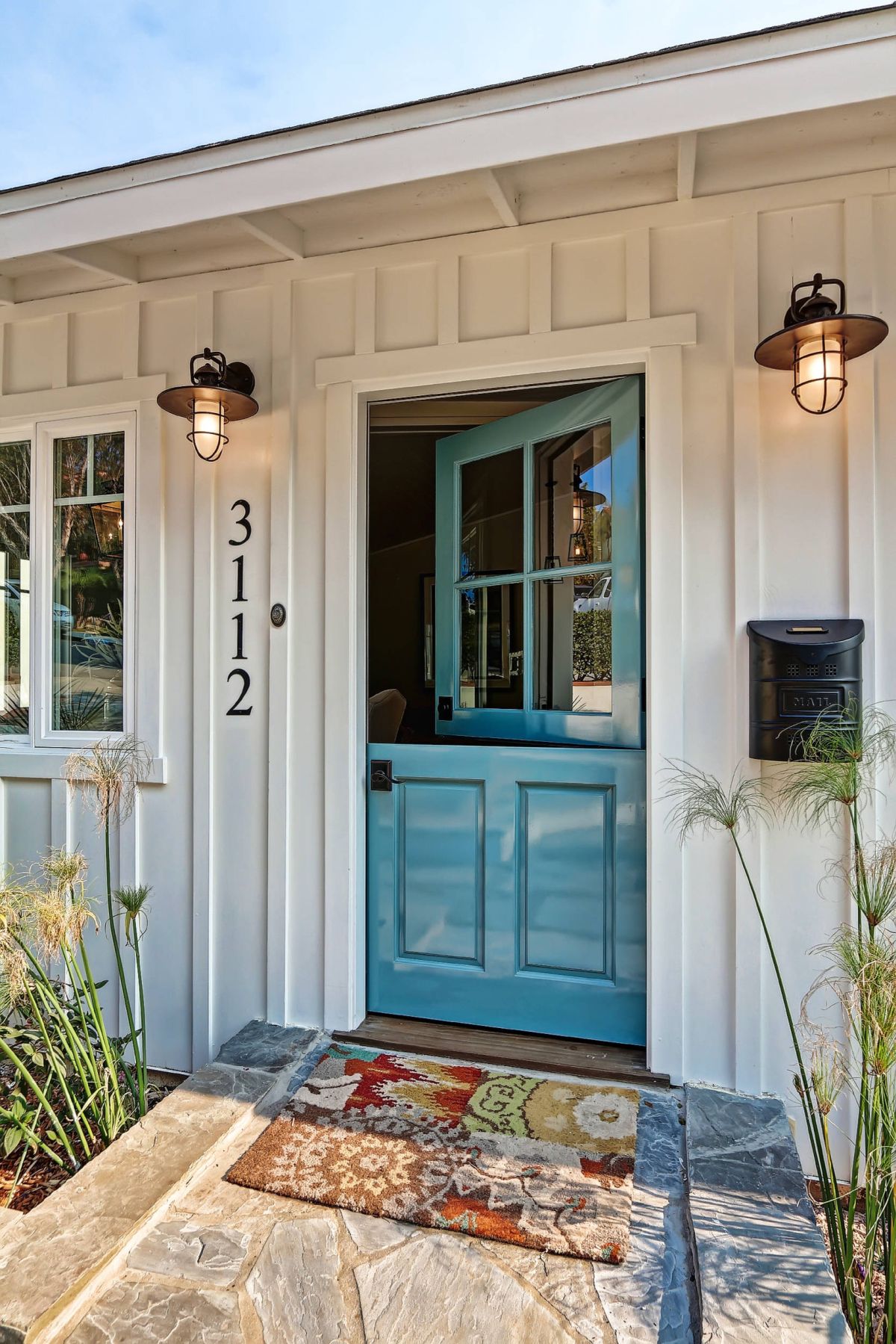 Town and Country Living
Town and Country Living
If you have a desire to stand out, choose a bright blue door to bring vibrancy to your entry. The style and color of this door will make your home a paragon of style in your own neighborhood. Plus, it creates an inviting entrance that your guests will love.
If you want to paint your own Dutch door a similar color, look at Briny (SW 6775) from Sherwin Williams or Varsity Blues (756) from Benjamin Moore.
A Dutch door is a type of door that is split across the middle in a horizontal fashion. Therefore, you can either open the door as one unit or open the top and bottom portion independent of one another.
Dutch doors are secure because they have bolts and locks that keep the door closed. However, because there are more moving parts on a Dutch door, the hardware is more susceptible to breaking. You need to make sure that you keep Dutch door panels and hardware in good repair to make sure that it is as secure as it can be. This is true for an interior Dutch door but more so for an exterior Dutch door.
Yes, you can take an existing door and turn it into a Dutch door. This works on standard doors that do not have anything in the middle that would block you from making a horizontal cut like a doorknob or decorative paneling. There are many DIY Dutch door tutorials that are helpful in walking you through this task.
In any door manufacturer or big box home fix-it store, you will be able to find Dutch doors for sale. These range in value and price so be sure to read reviews to make sure that you are getting a good product.
Because they are not standard, you will pay more for a Dutch door than for a regular door. Expect to pay anywhere from $750 to $1900 for a Dutch door and installation. You can save money by taking on a DIY project and making your own Dutch door from a regular door.
You can use a Dutch door anywhere in the house, from the front entry to interior doors. Internal Dutch doors work well in kid’s bedrooms, laundry rooms, pantries, and mudrooms. Exterior Dutch doors make beautiful front doors and side doors.
Dutch doors were popular in the Netherlands in the 17th century. Most of these doors were used as barn doors to keep in animals while allowing fresh air and sunlight in. However, Dutch doors have no affiliation with the Dutch today.
Yes, you can use a screen with a Dutch door, though it can be cumbersome. The best option is a retractable screen that you install on the outside of the door molding rather than using another screen door to cover the Dutch door.

Gisele Bundchen's contemporary twist on this emerging design trend is the talking point of her kitchen
Zendaya taps into the subtle power of this accessory to ensure her neutral living room is never boring
Amazon has become a go-to for chic home decor – here’s what we’re shopping from the 2024 Spring Sale
This designer's 'every seat needs a surface' rule has changed my living room layout forever – here's what I mean
5 designer Amazon storefronts that make shopping for stylish homeware so much easier
Joanna Gaines' 'mesmerizing' garden is the perfect example of how to grow cut spring flowers at home
Tan France opts for this stabilizing color palette to 'ground' his guest cottage, experts say
Shark's St Patrick's Day sale is here - and you can save $100s on vacuums and air purifiers
Matthew and Camila McConaughey's raw cabinets possess a texture and warmth that's replicable in our kitchens
How to Create a Cozy Winter Retreat at Home
Popular Types of Doors For Your Home
14 Themed Man Cave Ideas to Inspire and Energize
What Is A Flush Door?
What Is A Dutch Door?
What Are Sliding Doors?
What Are Louvered Doors?
What Is A Screen Door?
Pinterest Predicts: Western Gothic Interior Design to Dominate 2024
Cottagecore Aesthetic: Home Decor Tips That Will Work For You